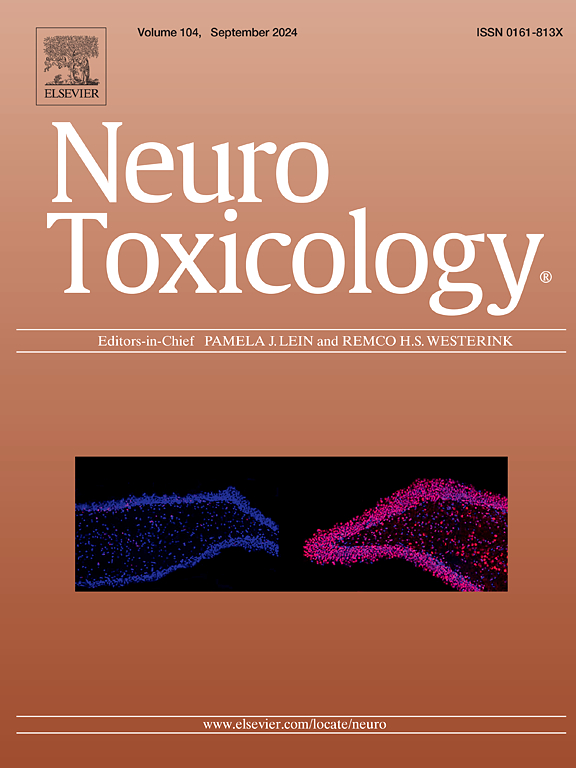In vivo and in vitro evaluation of the protective effects of osthole against ototoxicity using the zebrafish model and HEI-OC1 cell line
IF 3.9
3区 医学
Q2 NEUROSCIENCES
引用次数: 0
Abstract
Osthole, a coumarin derivative with potent antioxidant and anti-inflammatory properties, has demonstrated promising therapeutic potential in protecting against ototoxicity. This study investigated the protective effects of osthole through both in vitro and in vivo experimental models. A high-content screening of 1505 natural compounds in HEI-OC1 cells identified osthole as the most effective compound in alleviating gentamicin-induced cellular damage. Our results indicate that osthole confers protection by restoring autophagic flux and reducing the accumulation of reactive oxygen species (ROS). In HEI-OC1 cells, cell viability was significantly improved following co-treatment with gentamicin and osthole. Western blot analysis revealed that osthole modulates key signaling pathways involved in cell survival and autophagy. Furthermore, LysoTracker staining in zebrafish larvae confirmed that osthole preserved autophagic activity compromised by gentamicin exposure. In vivo experiments using wild-type and Tg(Brn3c:EGFP) zebrafish lines assessed neuromast hair cell survival in the lateral line system. Compared with the gentamicin-only group, the osthole co-treated group exhibited increased hair cell counts, a reduced number of TUNEL-positive apoptotic cells, decreased ROS levels, and enhanced autophagy. These outcomes collectively demonstrate the potential protective effects of osthole against gentamicin-induced ototoxicity in both cellular and zebrafish models. Taken together, these findings highlight osthole as a promising candidate for therapeutic development against aminoglycoside-induced hearing loss, offering a multi-targeted mechanism involving oxidative stress reduction, autophagy restoration, and inhibition of apoptosis.
利用斑马鱼模型和HEI-OC1细胞系研究蛇床子素对耳毒性的体内外保护作用
蛇耳素是香豆素衍生物,具有抗氧化和抗炎作用,在抗耳毒性方面具有良好的治疗潜力。本研究通过体外和体内实验模型研究蛇床子素的保护作用。通过对HEI-OC1细胞中1505种天然化合物的高含量筛选,发现蛇蛇素是减轻庆大霉素诱导的细胞损伤最有效的化合物。我们的研究结果表明,蛇床子通过恢复自噬通量和减少活性氧(ROS)的积累来提供保护。在HEI-OC1细胞中,庆大霉素和蛇床子素共同作用后,细胞活力显著提高。Western blot分析显示,蛇耳素调节了参与细胞存活和自噬的关键信号通路。此外,斑马鱼幼虫的LysoTracker染色证实,蛇耳洞保留了庆大霉素暴露后受损的自噬活性。使用野生型和Tg(Brn3c:EGFP)斑马鱼系进行体内实验,评估神经肥大毛细胞在侧线系统中的存活情况。与单纯庆大霉素组相比,蛇床子素共处理组毛细胞计数增加,tunel阳性凋亡细胞数量减少,ROS水平降低,自噬增强。这些结果共同证明了蛇床子素在细胞和斑马鱼模型中对庆大霉素诱导的耳毒性具有潜在的保护作用。综上所述,这些发现突出了蛇床子素作为治疗氨基糖苷性听力损失的有希望的候选药物,提供了包括氧化应激减少、自噬恢复和细胞凋亡抑制在内的多靶点机制。
本文章由计算机程序翻译,如有差异,请以英文原文为准。
求助全文
约1分钟内获得全文
求助全文
来源期刊

Neurotoxicology
医学-毒理学
CiteScore
6.80
自引率
5.90%
发文量
161
审稿时长
70 days
期刊介绍:
NeuroToxicology specializes in publishing the best peer-reviewed original research papers dealing with the effects of toxic substances on the nervous system of humans and experimental animals of all ages. The Journal emphasizes papers dealing with the neurotoxic effects of environmentally significant chemical hazards, manufactured drugs and naturally occurring compounds.
 求助内容:
求助内容: 应助结果提醒方式:
应助结果提醒方式:


